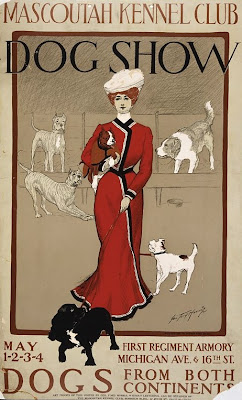James Hookway, "Historian Won't Let Scotland's Most Famous Dog Lie," Wall Street Journal, September 3, 2011
EDINBURGH, Scotland—To millions of people around the world, he's the loyal dog who kept a lonely vigil at his master's graveside.

Greyfriars Bobby, a Skye terrier, supposedly spent 14 years pining by the grave of his owner, a local known as Auld Jock who died in 1858. The tale of devotion has beguiled generations of visitors to Scotland's capital and inspired dozens of children's books and a 1961 Disney film, "Greyfriars Bobby: The True Story of a Dog.">>>
"Humans are Hardwired to Respond to Animals," International Business Times, August 30, 2011
No matter how immersed we are in the high-tech modern world, a new study finds that the human brain is hardwired to respond to animals.
Animals have been an important source of both food and fear throughout human history, and they have helped to shape our evolutionary path. Years of running from and running after animals have apparently left a mark on the human brain - just looking at a photo of an animal jolts our brains into actions.>>>
Jonathan Jones, "Horses shaped our art of war and peace," Guardian, August 29, 2011
Horses throng the history of art. The most ancient paintings that are known, in Chauvet cave in France, feature herds of horses, and Mark Wallinger is keeping the equine dream alive in today's art even if he never does get the money for his giant horse at Ebbsfleet.
The Chauvet horses are wild animals, observed by ice-age artists among the mammoths and rhinos of a Europe abundant in beasts long gone today. But our artistic relationship with the horse has evolved alongside the animal's domestication.>>>
"Trip to the Zhou: Remains of horses and chariots unearthed from tomb dating back to 3,000-year-old Chinese dynasty," Daily Mail, September 2, 2011
It could have been as early as 700 years before the birth of Jesus Christ that these horses were moved on to greener pastures - and no one has laid eyes on them until now.
Archaeologists have painstakingly uncovered the almost 3,000-year-old remains of horses and wooden chariots in a Zhou Dynasty tomb in Luoyang, Henan Province, China.>>>
Amina Khan, "New species of ancient rhinoceros found in Tibet," Los Angeles Times, September 2, 2011
Searching across the Tibetan plateau, paleontologists have discovered a species of woolly rhinoceros that may be an ancestor of the great ice age beasts that roamed the plains of North America, Europe and Asia.
The Coelodonta thibetana fossil dates to about 3.7 million years ago, about a million years before other known woolly rhinos.>>>







